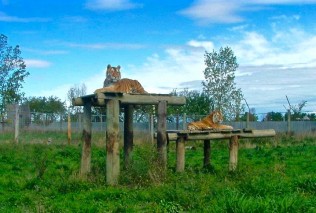Wildlife tourism has long been an attraction for people. From bullfighting halfway across the world to visiting the local zoo, it has played a predominant role in not only the way we learn as adults, but also in the way we teach our children about the natural world and our interactions with that world.
However, lately that particular industry has been under intense scrutiny. Although movements calling for a change started as early as the 60s and 70s, it hasn’t been until more recently, with widespread reveals on the poor treatment of elephants in captivity and the documentary entitled Blackfish chronicling the life of a SeaWorld Orca whale, that this particular brand of activism really began to pick up steam.
Now, with the very recent story of Cecil the Lion breaking hearts all over the world, the number of voices speaking out against wildlife tourism is changing from a loud murmur to a deafening roar.
Still, the overall effects of wildlife tourism remain a very gray area. When performed properly and for the right reasons, with the well-being of the animals and their environment always being placed first, incredible benefits can follow, including ecological protection, habitat restoration, and successful conservation of endangered species, to name a few.
Many legitimate and successful conservation centers and sanctuaries operate all over the world. One prime example sits quietly in the Midwest of the United States. Hiding in rural Michigan just an hour and a half north of Detroit, Summer Wind Farms Sanctuary is exactly what it calls itself: a sanctuary for animals that had unpleasant prior existences, occasionally as cast offs from traveling shows and circuses, but more typically by people wishing to have exotic pets without being able to properly care for them.

The ultimate goal of this particular sanctuary is to provide those animals that cannot return to the wild an opportunity to live out their natural lives in a safe environment. Family owned and run primarily by unpaid volunteers, nominal fees for private tours are collected to provide food and habitat maintenance (both of which can lean towards the extreme for more exotic species).
Unfortunately, this sanctuary does not represent the majority. Without that animal welfare focus, the effects can veer instead into animal cruelty and endangerment, population degradation, and habitat destruction.
When something has gained the title of an “industry,” it is usually with good reason. A great deal of wildlife tourism has become exactly that: an industry created to profit those in ownership of the park or experience. Sadly, while most make the claim that their proceeds benefit animal conservation, it is not always the case.
Two very simple ways to determine where the true intent of the establishment lies are to examine the environment of the animals and the level of interaction with the public that is promoted or allowed. Right off the bat, anything with a theme park or “thrill” feeling to it probably is not functioning for the well being of the animals in their care, but more likely operating with the primary purpose of profit.
Similarly, any wildlife experience that is selling extensive interaction with animals likely does not have their best interests at heart. This can include encounters such as elephant and camel rides, tiger petting, and swimming with captive dolphins.
Simply put, these animals are not behaving naturally, and the real question is what has been done to them to make them perform in this unnatural fashion. The answer is most commonly horrendous treatment, typically consisting of beatings and punishments as a form of “training,” and occasional drugging to ensure continued docile behavior.
According to World Animal Protection, currently almost a quarter of the world’s elephants are being held in captivity (around 16,000), along with 1,600 bottlenose dolphins, 5,000 tigers in the US alone (versus only 3,200 in the wild), and 8,000 lions in Africa (versus only 4,000 in wild).
While it is sad and disturbing that people would inflict such treatment simply for personal gain, we all have the opportunity to express our disdain for such practices with our purchases in who and what we support.
In addition, there are charities and organizations that work to promote and protect animal welfare, including but not limited to:
World Wildlife Fund
World Animal Protection
Care For the Wild International
World Society for the Protection of Animals
Read Ethical Traveler's Reprint Policy.
